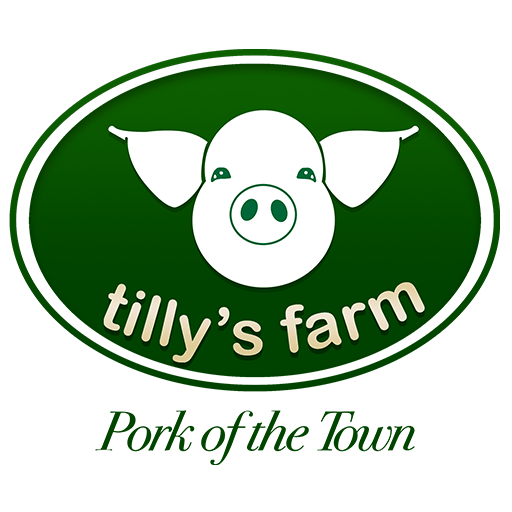In Ghana, pig farming is emerging as a high-potential sector. This is due to growing demand for pork, rising interest in livestock farming, and government support for agribusiness. farmers are exploring ways to scale operations, improve productivity, and ensure sustainability. If this demand is sustained, then it can greatly reduce Ghana’s meat production deficit which currently stands at around 80%
Slowly and consistently one of the most promising technologies that can improve productivity and which is gaining traction in this space is Artificial Insemination (AI) in pig breeding.
In this article, we will explore the business case for AI in pigs in Ghana, highlighting its benefits, cost-effectiveness, challenges, and potential impact on the country’s pig industry.
Current State
Ghana has an 80% meat production deficit, which means as a country we rely heavily on imported meat, pork included. This production deficit can be attributed to traditional breeding methods which limit the genetic potential of pigs, increase disease transmission, and prolong the growth cycle. This therefore comparatively makes it expensive to locally produce livestock. This is where Artificial Insemination can transform outcomes.
What is Artificial Insemination (AI) in Pig Breeding?
Artificial Insemination in pig production involves the collection of semen from a boar and manually introducing it into a sow’s reproductive tract when the sow comes on heat. Instead of relying on natural mating, AI allows farmers to access high-quality genetics from superior boars. at a fraction of the cost.
Globally, AI is a standard practice in commercial pig production and it is the mainstay in countries like Denmark, the Netherlands and the United States. In countries like Rwanda, it is fast gaining traction and for Ghana, this presents an untapped opportunity to revolutionize pig farming.
Business Benefits of AI in Pig Farming
Implementing AI as part of a pig farming enterprise has tangible financial and operational advantages. Here’s why it makes business sense:
1. Improved Genetics and Productivity
- Access to semen from high-performing breeds with superior growth rates, feed efficiency, and meat quality.
- Increased litter sizes (average 10-14 piglets vs. 6-8 with traditional breeding).
- Reduced inbreeding and genetic defects.
2. Lower Production Costs
- Reduces the need to maintain multiple boars, lowering feed and healthcare expenses.
- Enables planned breeding cycles, reducing downtime between farrowings.
- Limits spread of reproductive diseases common with natural mating.
3. Scalability and Standardization
- Makes it easier for pig farms to scale production consistently.
- Allows centralized breeding centers to supply semen to multiple farms across regions.
- Enhances recordkeeping, traceability, and performance monitoring.
4. Market Differentiation and Premium Pricing
- Produce uniform pigs that meet market specifications for hotels, restaurants, and processors.
- Premium pork cuts and specialty products like bacon, sausages, and ham require standardized inputs.
5. Empowering Women and Youth
- Reduces physical demands of managing boars, making pig farming more accessible to women and youth.
- Aligns with digital extension and mobile-based advisory services.
Addressing Common Concerns about AI in Ghana
Despite the advantages, adoption remains low due to misinformation, limited access to skilled technicians, and upfront costs. Here’s how these concerns can be addressed:
- “AI is too expensive.” – AI reduces the need for multiple breeding boars, saving money in the long term. Group models can spread the cost.
- “I don’t have the skills to do it.” – With basic training, extension officers or lead farmers can carry out insemination safely.
- “Where do I get quality semen?” – AI centers like those by Tilly’s Farm offer quality, disease-free semen and training services.
The Role of AI in Modern Pig Value Chains
AI isn’t just a breeding tool—it’s a catalyst for value chain transformation:
- Input Suppliers: AI boosts demand for genetic services, lab tools, and hormones.
- Feed Producers: Better genetics need consistent feed, stimulating feed industry growth.
- Veterinary Services: Opportunities for health monitoring and reproductive care.
- Aggregators and Processors: Enables standardized pigs for processing and export.
- Technology Providers: Supports digital farm management and traceability systems.
How to Get Started with AI in Pig Farming
- Partner with a reputable AI provider like Tilly’s Farm for quality genetics and support.
- Train your team or cooperative leaders for in-house AI capabilities.
- Start small, measure results, and scale gradually.
- Join a cooperative or out-grower scheme to spread costs and access services.
- Use digital tools to manage AI schedules, performance data, and financials.
Call to Action: Invest in the Future of Pig Farming
The business case for Artificial Insemination in pigs is clear: higher productivity, better genetics, lower disease risk, and increased profitability.
At a time when Ghana must bridge its meat deficit and create sustainable jobs, AI presents a transformative tool for both smallholder farmers and commercial agribusinesses.
Are you ready to modernize your pig farming operations? Partner with experienced AI providers like Tilly’s Farm and gain access to expert support, quality genetics, and a connected value chain that drives success.
Contact us today to learn how to integrate AI into your pig farming business and take the first step toward a more productive future.
Let’s breed success together—one sow at a time.
Written By Maxwell Q. Hammond


